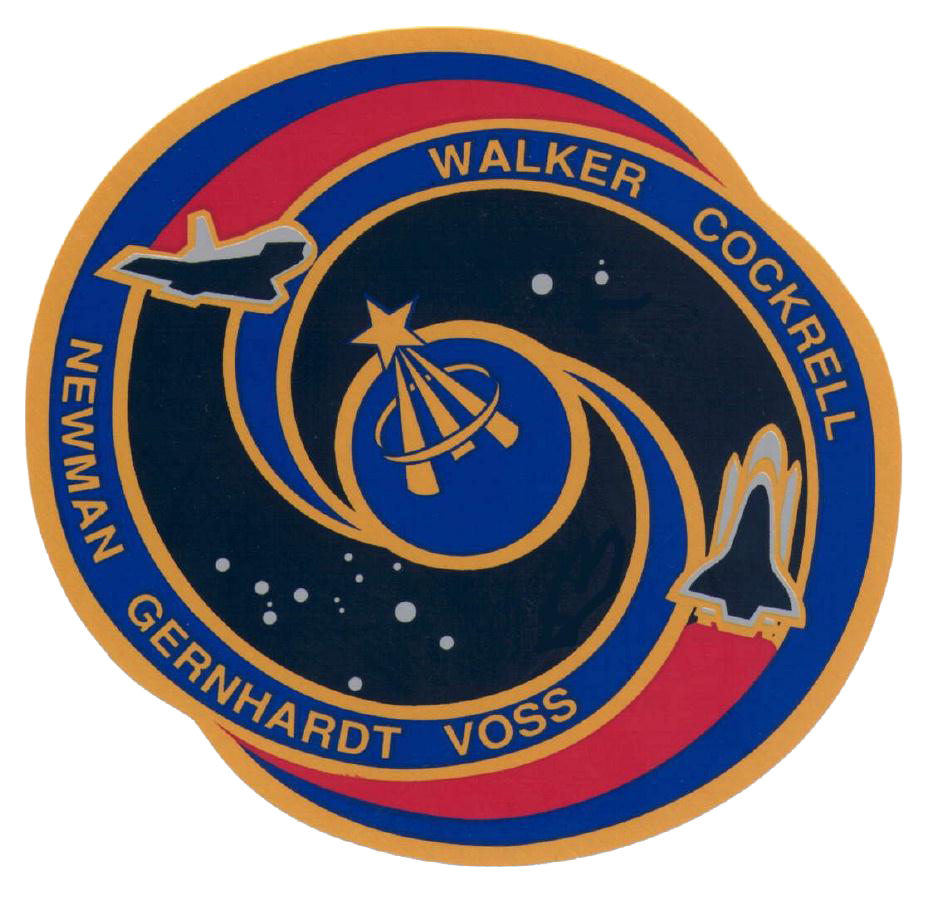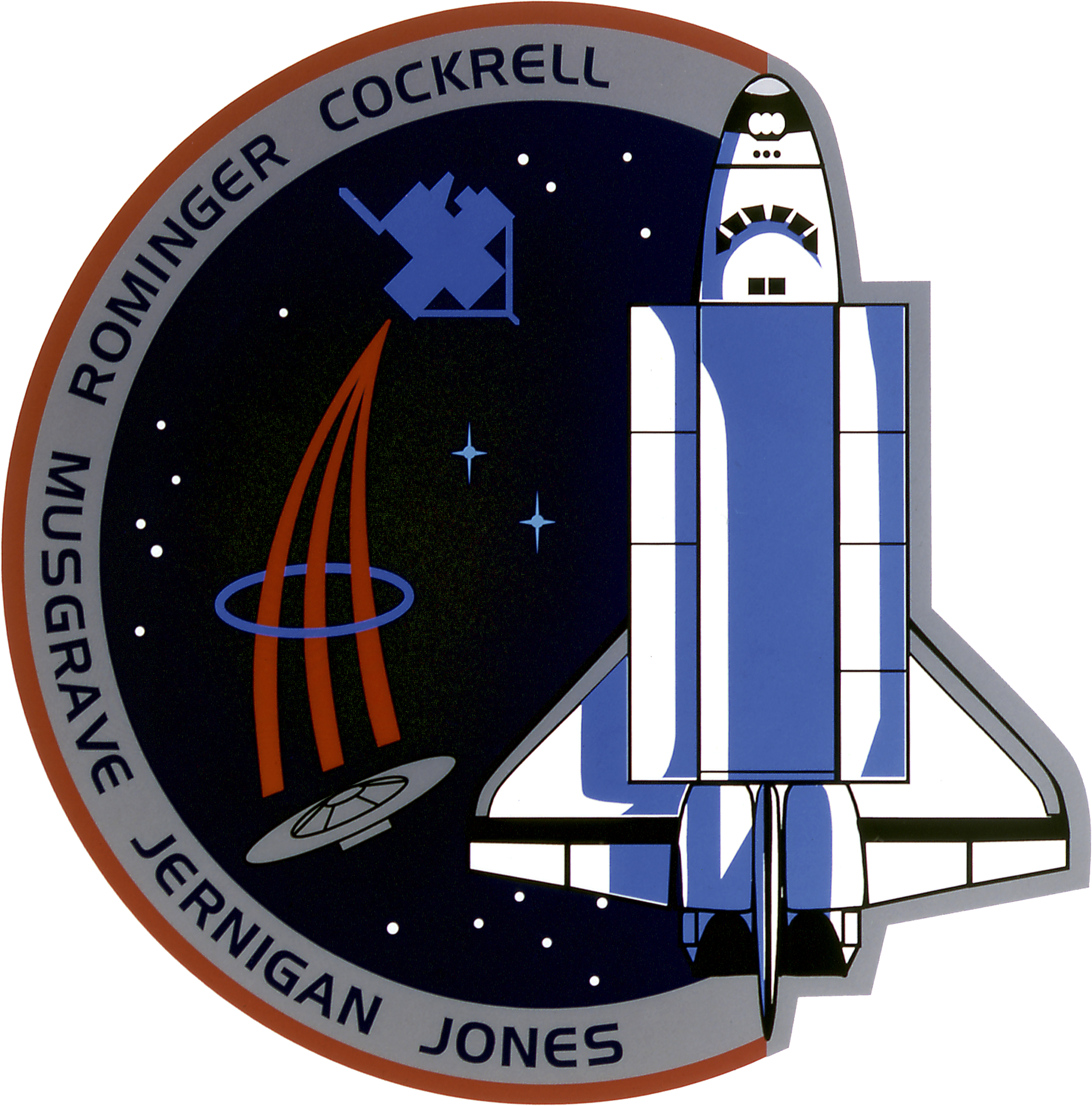Ken Cockrell - From Rockdale to the Stars
By Brandon Reynolds, Vision Historic Preservation Foundation Historical Committee Chair
In the tapestry of American space exploration, few threads are as colorful and inspiring as the story of Ken Cockrell, a native son of Rockdale, Texas. His journey from the humble beginnings in a small Texan town to the vast expanse of outer space encapsulates not just the triumph of human ambition but also the enduring spirit of Rockdale as it celebrates its 150th anniversary.
Ken Cockrell was born in Austin, Texas, but it was in Rockdale where his story truly began. Growing up in this close-knit community, he attended Rockdale High School. It was here, amidst the classrooms and corridors of his alma mater, where the seeds of his astronomical aspirations were sown. His graduation from Rockdale High School marked not just the culmination of his early education but also the commencement of a journey that would take him far beyond the Earth's atmosphere.
After high school, Cockrell's quest for knowledge led him to pursue higher education, culminating in a distinguished career with NASA. His tenure at NASA was nothing short of stellar. He participated in multiple space shuttle missions, serving in critical roles such as pilot and commander. These missions were pivotal in expanding our understanding of space and showcased Cockrell's exceptional skills and leadership.
But beyond his technical achievements, Cockrell's legacy is deeply rooted in the inspiration he provides. His accolades and honors are a testament to his extraordinary contributions to space exploration. However, his impact extends beyond the confines of science and technology. His story is a beacon of inspiration, especially for the youth of Rockdale, demonstrating that the stars are within reach if one dares to dream and work tirelessly towards those dreams.
As Rockdale commemorates its 150th anniversary, Ken Cockrell's story is a poignant reminder of the remarkable potential that lies within small-town America. His journey from Rockdale to the stars is not just a personal triumph but a collective one, representing the aspirations and values of the community that shaped him. It serves as a powerful testament that no matter where one starts, with hard work and determination, the sky is not the limit but just the beginning.
In conclusion, Ken Cockrell's life and achievements are intertwined with the history and spirit of Rockdale, Texas. His story, marked by ambition, dedication, and stellar accomplishments, resonates profoundly as the town celebrates a significant milestone in its history. Ken Cockrell, a true son of Rockdale, has not only traversed the vastness of space but has also left an indelible mark on the hearts and minds of those who look up to the stars and dare to dream.

STS-56 carrying ATLAS-2 was a nine-day mission aboard the Space Shuttle Discovery during which the crew conducted atmospheric and solar studies in order to better understand the effect of solar activity on the Earth's climate and environment. STS-56 launched April 8, 1993 and landed April 17, 1993. Mission duration was 9 days, 6 hours, 9 minutes, 21 seconds. STS-56 Mission Insignia The STS-56 patch is a pictorial representation of the STS56/ATLAS-2 mission as seen from the crew's viewpoint. The payload bay is depicted with the ATLAS-2 pallet, Shuttle Solar Backscatter Ultra Violet (SSBUV) experiment, and Spartan -- the two primary scientific payloads on the flight. With ATLAS-2 serving as part of the Mission to Planet Earth project, the crew has depicted the planet prominently in the artwork. Two primary areas of study are the atmosphere and the sun. To highlight this, Earth's atmosphere is depicted as a stylized visible spectrum and the sunrise is represented with an enlarged two-colored corona. Surnames of the commander and pilot are inscribed in the Earth field, with the surnames of the mission specialists appearing in the space background.

STS-69 was a 10-day mission aboard the Space Shuttle Endeavour. The primary objective of STS-69 was the successful deployment and retrieval of a SPARTAN satellite and the Wake Shield Facility (WSF). The WSF was designed to evaluate the effectiveness of using a free-flying platform to grow semiconductors, high temperature superconductors and other materials using the ultra-high vacuum created behind the spacecraft. STS-69 launched September 7, 1995 and landed September 18, 1995. Mission duration was 10 days, 20 hours, 28 minutes. STS-69 Mission Insignia Designed by the mission crew members, the patch for STS-69 symbolizes the multifaceted nature of the flight's mission. The primary payload, the Wake Shield Facility (WSF), is represented in the center by the astronaut emblem against a flat disk. The astronaut emblem also signifies the importance of human beings in space exploration, reflected by the planned space walk to practice for International Space Station (ISS) activities and to evaluate space suit design modifications. The two stylized Space Shuttles highlight the ascent and entry phases of the mission. Along with the two spiral plumes, the stylized Space Shuttles symbolize a NASA first, the deployment and recovery on the same mission of two spacecraft (both the Wake Shield Facility and the Spartan). The constellations Canis Major and Canis Minor represent the astronomy objectives of the Spartan and International Extreme Ultraviolet Hitchhiker (IEH) payload. The two constellations also symbolize the talents and dedication of the support personnel who make Space Shuttle missions possible.

STS-80 was a 17-day mission aboard the Space Shuttle Columbia. During STS-80 the crew deployed and retrieved the Wake Shield Facility (WSF) and the Orbiting Retrievable Far and Extreme Ultraviolet Spectrometer (ORFEUS) satellites. The ORFEUS instruments, mounted on the reusable Shuttle Pallet Satellite, studied the origin and makeup of stars. STS-80 launched November 19, 1996 and landed December 7, 1996. Mission duration was a record-breaking 17 days, 15 hours, 53 minutes. This mission patch for mission STS-80 depicts the Space Shuttle Columbia and the two research satellites its crew deployed into the blue field of space. The uppermost satellite is the Orbiting Retrievable Far and Extreme Ultraviolet Spectrograph-Shuttle Pallet Satellite (ORFEUS-SPAS), a telescope aimed at unraveling the life cycles of stars and understanding the gases that drift between them. The lower satellite is the Wake Shield Facility (WSF), flying for the third time. It will use the vacuum of space to create advanced semiconductors for the nation's electronics industry. ORFEUS and WSF are joined by the symbol of the Astronaut Corps, representing the human contribution to scientific progress in space. The two bright blue stars represent the mission's Extravehicular Activities (EVA), final rehearsals for techniques and tools to be used in assembly of the International Space Station (ISS). Surrounding Columbia is a constellation of 16 stars, one for each day of the mission, representing the stellar talents of the ground and flight teams that share the goal of expanding knowledge through a permanent human presence in space.

STS-98 was a 12-day mission aboard the Space Shuttle Atlantis. The STS-98 crew continued the task of building and enhancing the International Space Station by delivering the U.S. laboratory module Destiny. The Shuttle spent seven days docked to the station while Destiny was attached, and three spacewalks were conducted to complete its assembly. The crew also relocated a docking port, and delivered supplies and equipment to the resident Expedition-1 crew. STS-98 launched February 7, 2001 and landed February 20, 2001. Mission duration was 12 days, 21 hours, 20 minutes. Unacceptable weather conditions in Florida necessitated a landing at Edwards Air Force Base, California. This is the insignia for STS-98, which marks a major milestone in assembly of the International Space Station (ISS). Atlantis' crew will deliver the United States Laboratory, Destiny, to the ISS. Destiny will be the centerpiece of the ISS, a weightless laboratory where expedition crews will perform unprecedented research in the life sciences, materials sciences, Earth sciences, and microgravity sciences. The laboratory is also the nerve center of the Station, performing guidance, control, power distribution, and life support functions. With Destiny's arrival, the Station will begin to fulfill its promise of returning the benefits of space research to Earth's citizens. The crew patch depicts the Space Shuttle with Destiny held high above the payload bay just before its attachment to the ISS. Red and white stripes, with a deep blue field of white stars, border the Shuttle and Destiny to symbolize the continuing contribution of the United States to the ISS. The constellation Hercules, seen just below Destiny, captures the Shuttle and Station's team efforts in bringing the promise of orbital scientific research to life. The reflection of Earth in Destiny's window emphasizes the connection between space exploration and life on Earth.

STS-111 was a 13-day mission aboard the Space Shuttle Endeavour. The STS-111 mission delivered a new ISS resident crew and a Canadian-built mobile base for the orbiting outpost's robotic arm. The crew also performed a late-notice repair of the station's robot arm by replacing one of the arm's joints. It was the second Space Shuttle mission dedicated to delivering research equipment to the space platform. STS-111 also brought home the Expedition-Four crew from their 6+1⁄2-month stay aboard the station. STS-111 launched June 5, 2002 and landed June 19, 2002. Mission duration was 13 days, 20 hours and 35 minutes. Unacceptable weather conditions in Florida necessitated a landing at Edwards Air Force Base, California. The STS-111 patch symbolizes the hardware, people, and partner nations that contribute to the flight. The Space Shuttle rises on the plume of the Astronaut Office symbol, carrying the Canadian Mobile Base System (MBS) for installation while docked to the International Space Station (ISS). The mission is named UF-2 for ISS Utilization Flight number two. The ISS orbit completes the Astronaut Office symbol and is colored red, white, and blue to represent the flags of the United States, Russia, France, and Costa Rica. The Earth background shows Italy, which contributes the Multi Purpose Logistics Module (MPLM) used on this flight to re-supply ISS. The ten stars in the sky represent the ten astronauts and cosmonauts on orbit during the flight, and the star at the top of the patch represents the Johnson Space Center, in the state of Texas, from which the flight is managed. The names of the STS-111 crew border the upper part of the patch, and the Expedition Five (going up) and Expedition Four (coming down) crews’ names form the bottom of the patch. The NASA insignia design for Shuttle flights is reserved for use by the astronauts and for other official use as the NASA Administrator may authorize. Public availability has been approved only in the forms of illustrations by the various news media. When and if there is any change in this policy, which is not anticipated, the change will be publicly announced.
Special Thanks to the
Grant Makers and
Patrons of the Arts
for providing
funding support for the
Heritage Celebration at The 1895!
This historical essay and related mural is made possible in part through a grant from:
The National Trust for Historic Preservation - Preservation Services Grant
City of Rockdale - Hotel Occupancy Tax Grant for Promotion of the Arts
Texas Rural Communities Grant
Texas Historical Foundation - Jeanne R. Blocker Memorial Fund Grant
Riot Platforms Community Grant
And a generous donation from the following Patrons of the Arts:
Mine Services Inc
Rockdale Federal Credit Union

